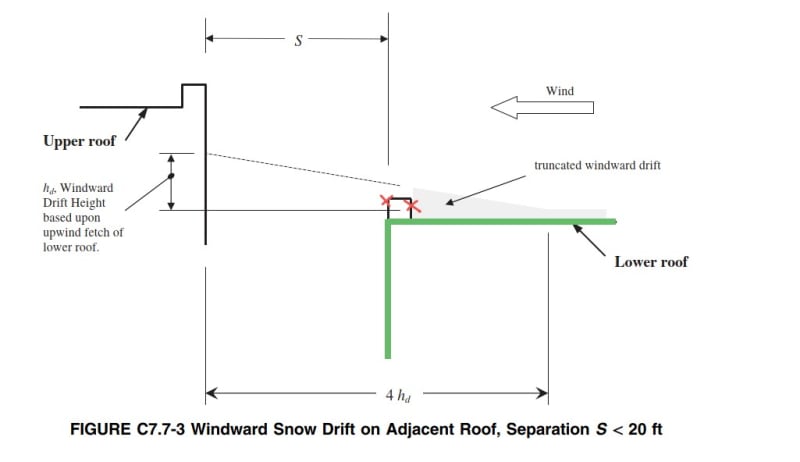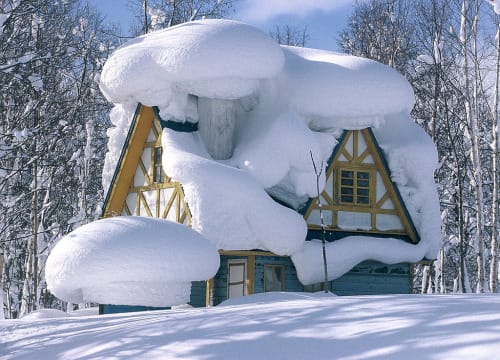I'm designing a new building that is next to an adjacent existing building. My new building is going to be almost 10' taller than the existing building, so clearly snow drift is something I have to consider for the existing lower building. (Buildings are both the same owner and so it is part of my project scope to check and possibly reinforce the existing framing). My thought was to separate the buildings by 2 feet or so (assuming arch approves). I know this would not eliminate the leeward drift since the existing building is <20' separation and within the 1:6 wind shadow. But I thought this would totally eliminate the windward drift (which is higher than the leeward when I run calcs as if the buildings are not separated). I thought the snow would just essentially fall between the buildings when the wind blew across the existing and towards the face of the new. However, the commentary in ASCE 7-16 (Section C7.7.2) says otherwise. It looks like I have to still run the same windward drift calc to come up with the typical triangular drift and can only eliminate the portion of drift that would be between the buildings. Figure C7.7-3 shows this and shows the lower building having a parapet. Does this still apply if the lower building does not have a parapet? (See image) If the new building is the green outline, with no parapet, how would the windward snow drift build up on it? Does anyone know of anything in the code that specifically addresses this that I might be missing?



